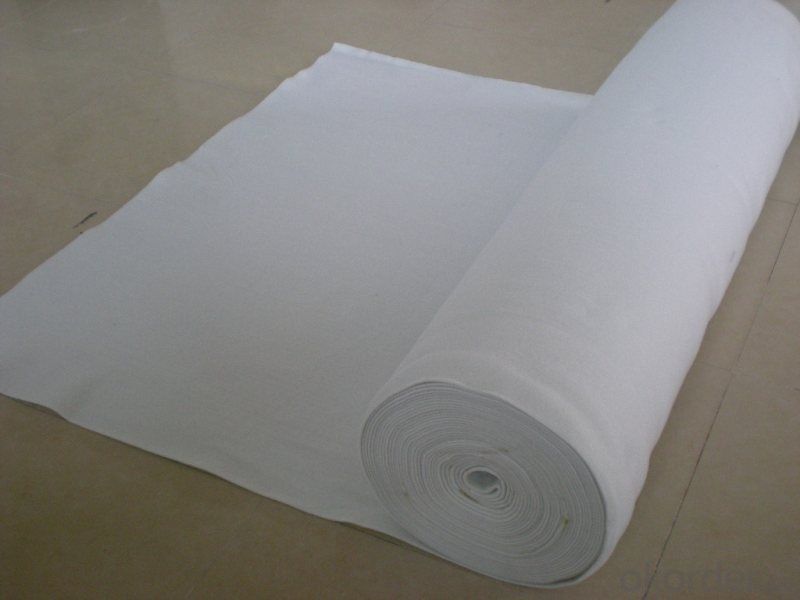- Understanding the Role of Geomembrane Liners in Waste Management
- Innovations in Geomembrane Liners for Water Management
- Geomembrane Liners: A Comprehensive Guide
- The Future of Geomembrane Liners in Civil Engineering
- Geomembrane Liners: Enhancing Landfill Stability
Manager:
WhatsApp:+86 177 0135 2670
Tel:+86 177 0135 2670
Email:marketing@okorder.com
Address:3rd Floor, No.2 Building, No.1 Sanlihe Road
The Compatibility of Geomembrane Liners with Various Substrates
Geomembrane liners have become an essential part of modern construction projects, particularly in the realm of environmental engineering. These versatile synthetic materials are designed to provide a barrier against the passage of fluids and gases, making them ideal for use in landfills, reservoirs, and other containment structures. However, the effectiveness of a geomembrane liner is heavily dependent on its compatibility with the substrate it's laid upon. Let's dive into the fascinating world of geomembranes and explore how they interact with various substrates, the challenges faced, and the solutions to ensure a long-lasting and efficient barrier system.

The Role of Geomembrane Liners
A geomembrane liner is a thin, flexible layer made from polymeric materials such as high-density polyethylene (HDPE), polyvinyl chloride (PVC), or ethylene propylene diene monomer (EPDM). They are engineered to provide a waterproof and chemical-resistant barrier. The primary function of these liners is to contain contaminants, prevent leakage, and protect the surrounding environment from potential hazards.
The Dance of Compatibility
Compatibility is not just about the materials but also about how they work together under various conditions. When we talk about compatibility, we're referring to the ability of a geomembrane liner to bond with the substrate without causing damage to either material. This compatibility ensures a seamless barrier that prevents the seepage of contaminants.
The Substrate: A Foundation for Success
The substrate is the surface on which the geomembrane liner is laid. It can be made of various materials, such as soil, rock, or concrete, and its condition plays a crucial role in the liner's performance. A stable and well-prepared substrate is essential for the proper adhesion and longevity of the geomembrane.
Challenges in Compatibility
Sometimes, the substrate and the geomembrane liner may not get along so well. Issues such as uneven surfaces, sharp objects, or chemical reactions can compromise the integrity of the liner. For instance, a rough substrate can lead to punctures or uneven contact, while chemical reactions can cause the liner to degrade over time.
Solutions for Better Compatibility
To overcome these challenges, several strategies can be employed. Smoothing the substrate, using protective layers, and selecting the right type of geomembrane for the specific substrate are some of the ways to ensure compatibility. Additionally, regular inspections and maintenance can help identify and address potential issues before they become critical.
The Importance of Regular Inspections
Regular inspections are vital to the health of any geomembrane liner system. They allow for the early detection of any issues that could affect the liner's performance. By catching problems early, repairs can be made promptly, and the liner's lifespan can be extended.
The Human Touch: Personalizing the Process
While the technical aspects of geomembrane liners are crucial, it's also important to remember the human element. Engineers, technicians, and construction workers all play a role in ensuring that the liner is installed correctly and functions as intended. Their expertise and attention to detail can make a significant difference in the success of a project.
The Future of Geomembrane Liners
As technology advances, so too does the development of geomembrane liners. New materials and techniques are being explored to improve the compatibility and performance of these liners. The future looks bright for geomembrane liners, with innovations promising even more reliable and efficient containment solutions.
Conclusion
In conclusion, the compatibility of geomembrane liners with various substrates is a complex yet fascinating topic. It's a delicate balance of materials, conditions, and human expertise. By understanding the factors that affect compatibility and taking the necessary steps to ensure it, we can create robust and effective containment systems that protect our environment for generations to come.
- Previous:Geomembrane Liners: A Solution for Acid Mine Drainage
- Next:The Testing and Certification of Geomembrane Liners
-
2024-12-05Geomembrane Liners: A Comprehensive Guide






